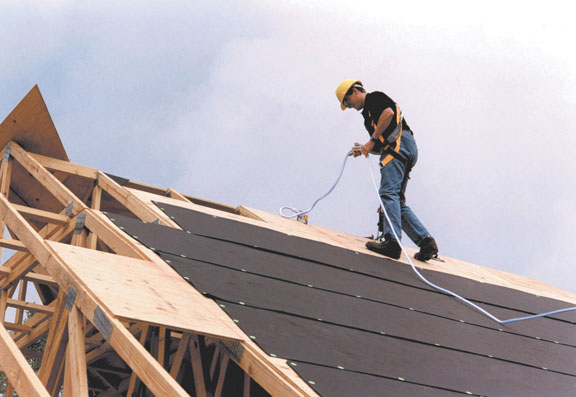Not Again!
I have been reading news stories, accident reports and OSHA citation summaries about fatal roof falls since 1970. The only change I’ve noticed recently is in their increased frequency and rising numbers. Admit it, a graveyard just containing construction workers who fell to their death would primarily contain roofers. I will concede that the internet and social media are both responsible for the increase in accident reporting as well as widespread distribution of that data, but I am equally certain that back in the ‘50’s and 60’s roofers universally accepted potential fatal falls as an everyday reality on their jobs.
Today’s trade news is full of stories of roofing contractors from every state being OSHA-cited and heavily penalized for willful violations, as well as successfully sued for criminal and civil negligence for failing to provide fall protection for their employees. Our “acceptable” national highway fatality rate has always been recorded in deaths-per-million-miles driven per year. Perhaps fatalities in the roofing trade should be likewise quantified in deaths-per-million-square-feet-applied per annum. Only then could we open our eyes and honestly calculate the real profit and loss ratio generated by roofing without using fall protection. We should be capable of looking our children in the eyes while encouraging them to join the building trades, knowing they will be protected from falls on the job by their future employer.
As an industry, roofing isn’t just stubbornly resisting implementing fall protection, it is rejecting it entirely. Residential contractor’s compliance with OSHA’s construction Subpart M might be respectively higher in some other parts of the country, but here in the northeast I’m reporting it is “dead on the ground”. For years, while riding along Federal, state and local highways, I have witnessed hundreds of roofing crews, demolishing, replacing and/or installing new roofs without using any fall protection whatsoever. In the past several seasons, with building permits and housing starts in the NE on the rise, I can still count the number of OSHA-compliant roofing contractors observed across nine states on less than two hands.
What Is It Going To Take?
In my career, I have market-researched many manufacturer’s, visited hundreds of worksites, interviewed many construction workers, personally conducted PFAS field trials, and analyzed cost/benefit analyses concerning fall protection methods and equipment reasonably and readily available to residential and commercial roofers around the country. In the same period, the business of fall protection has exploded into a multi-trillion dollar industry worldwide. Market competition has kept equipment retail costs relatively low. The variety, style, comfort and versatility of FP methods and ANSI-approved devices has grown exponentially since the body belt and rope lanyard that I first wore.
The expansion of OSHA-authorized Outreach Training opportunities for workers in this country has simultaneously expanded to astonishing levels. Since its initiation in 1971 almost 5 million workers have been peer-trained in jobsite hazard recognition and avoidance techniques in all 50 states. I am startled when I encounter a worker who has not received any OSHA training. The prime directive of the construction industry training is in the Focus Four subjects, with Falls from Heights remaining the number one cause of death on the job for the past forty-eight years. I’ve watched as the majority of the building trades have slowly, but surely, acquiesced over time to the man-hours, effort and cost of fall protection on the job. What is it about our roofing trade that still clings to obsolete work practices, believes no fall protection is safer than PFAS, and willingly accepts preventable deaths on the job? I have diligently read all of the conservative organizational blogs and trade association editorials in the media calling for big government to stay out of the business of small business in this country.
As with the assault weapons debate, I listen to ALL the voices, but still lock up my guns. I also elect to drive on the right-hand side of the road, always wear a seatbelt, drive sober and refuse to answer my phone behind the wheel. And I implement a site-specific fall protection plan above 6 feet on every job and wish everyone did as well. As a single member of a civil society, I don’t believe any of these rules diminish my personal freedoms, but rather, protect them.


Recent Comments
LinkedIn reviews can offer insights into the experiences...
menyala abangku
If you're looking for a trustworthy online gambling...
Casa-farmacia, tu mejor farmacia online para España
Prasing for such great work